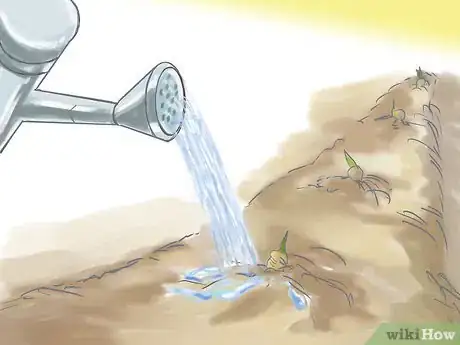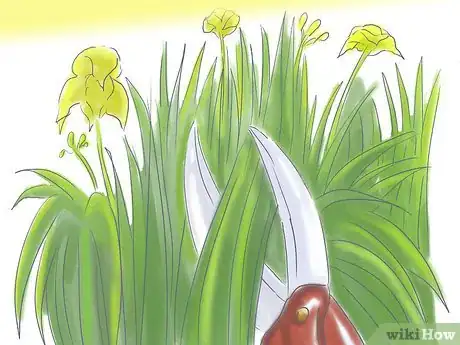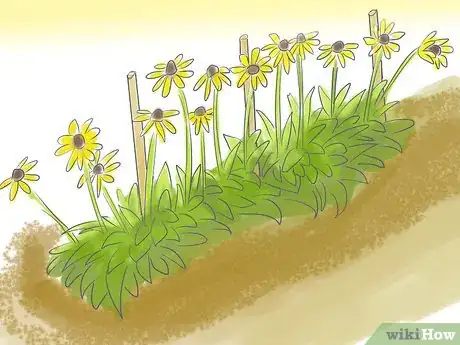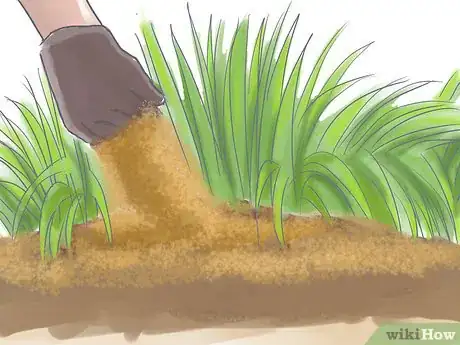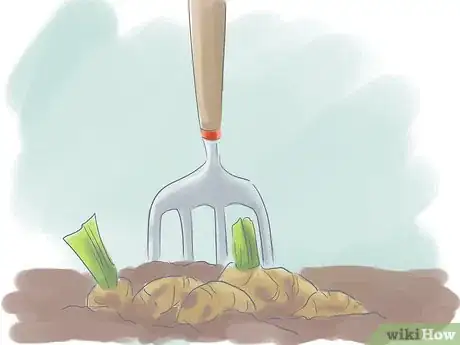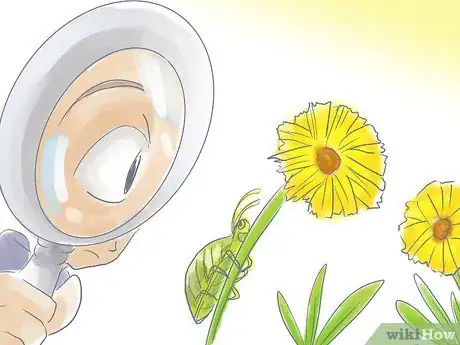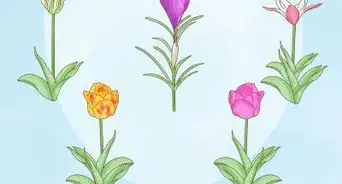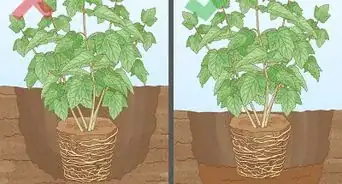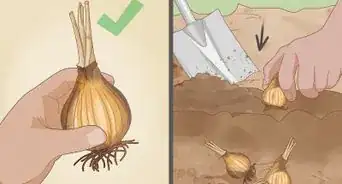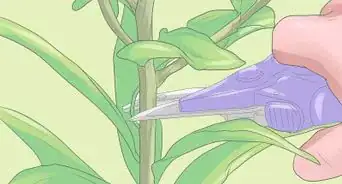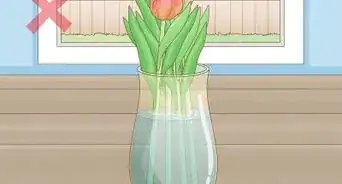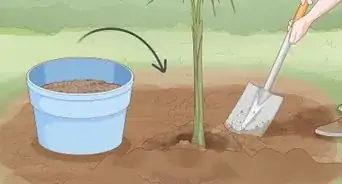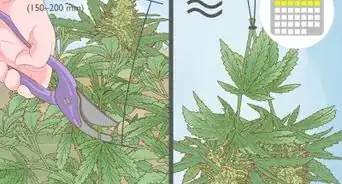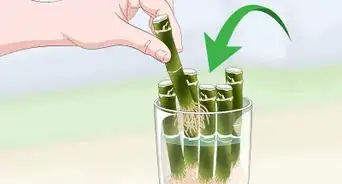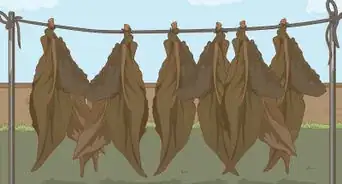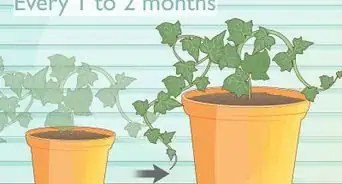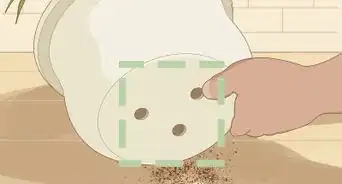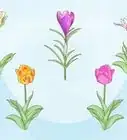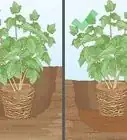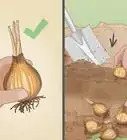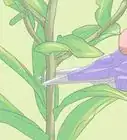X
wikiHow is a “wiki,” similar to Wikipedia, which means that many of our articles are co-written by multiple authors. To create this article, volunteer authors worked to edit and improve it over time.
This article has been viewed 54,890 times.
Learn more...
Caring for bulbs is a relatively simple and uncomplicated process, though it should be noted that caring for summer bulbs and for spring bulbs differ in small ways when it comes to storage. Move down to Step 1 for a primer on all aspects of caring for bulbs.
Steps
-
1Water the bulbs. You should water bulbs after planting them. This will help the plant develop roots and also set the soil around the bulb, eliminating air pockets.
- Don't water shallowly as the bulb may be planted pretty deep and the water needs to soak the roots thoroughly.
- Add about one inch of water every week after the plant starts flowering if the rainfall is not adequate in your area.
- It is important to note that shallowly planted bulbs will rot if over-watered.
-
2Remove foliage. Foliage left after the bloom is spent is not a pretty sight. You may be tempted to remove it the moment it pops out but you should refrain from doing so and only cut away the foliage when it has dried and withered (when it turns yellow).
- Foliage on smaller bulbs such as Snowdrops or Squill will not take long to dry like larger bulbs such as tulips.
Advertisement -
3Provide support for the stems. Some summer bulbs have weak stems which cannot support themselves. Often, a ring around the stems gives them enough support. Alternatively, you may embed a stake next to the bulb when planting, always taking care not to damage the bulb.
-
4Cover the flower bed with a layer of mulch. Doing so helps retain moisture in the bed and also cools the plants during times oft too much heat.
- Early blooming bulbs need not be mulched.
-
5Uproot bulbs and store them to protect them from frost, then replant them when the weather is adequately warm.
- Spring bulbs enter their dormant period in the summer when the foliage and the roots dry. You can store the bulbs in a cool and ventilated place and replant them in the fall. This method prevents overcrowding as the bulbs create new additions to bulb cluster.
- Summer bulbs do not like frost and should be stored before the frost sets in. Use a spading fork to remove the bulb, then remove the dirt which is still clinging to the roots unless the bulb is a Achimenes, Begonia, Canna, Caladium, Dahlia or Ismene. For these, leave some moist soil clinging to the roots.
- First spread the bulbs out in a shaded place and let them dry.
- When dry, store them away in a cool well ventilated cellar or basement. Make sure air can pass through the bulbs so as to prevent decay. Don't put them into too many layers.
- Check whether the bulbs have any spots which may indicate disease. Also throw out undersized bulbs.
-
6In the soil or anywhere on the plant, check to see if there are any bugs or diseases. Do some research on the internet about how to kill them. There is a high chance that beetle larvae might exist in the soil because of the huge roots.
- Be sure to check them every month or the bugs/diseases would multiply making it harder for you to remove.
Advertisement
Community Q&A
-
QuestionI live in the Deep South where we don't generally have frost. Is it necessary to dig up the bulbs?
 Community AnswerNo, you don't have to dig them up.
Community AnswerNo, you don't have to dig them up. -
QuestionShould I keep watering the bulbs that are done flowering?
 Community AnswerYes, but taper it off gradually until there's no green left in the leaves.
Community AnswerYes, but taper it off gradually until there's no green left in the leaves. -
QuestionI planted hyacinths in glass pots, but the bulbs had a lot of roots and the rest just did not bloom. Can I plant them outside now?
 Community AnswerYes, but in a sheltered area, like if you have a deck and there is fresh soil you can plant in. Also, even though it is outside sometimes it might not rain or get water, so still water it.
Community AnswerYes, but in a sheltered area, like if you have a deck and there is fresh soil you can plant in. Also, even though it is outside sometimes it might not rain or get water, so still water it.
Advertisement
Warnings
- Fall planted bulbs must develop roots before cold weather sets in.⧼thumbs_response⧽
- Never store bulbs in an area where ethylene gas produced by fruits (such as apples) is present.⧼thumbs_response⧽
- Do not “braid” the foliage to make it look pretty.⧼thumbs_response⧽
Advertisement
Things You'll Need
- A bulb garden.
- A ring or a stake
- Spading fork
- Mulch
References
About This Article
Advertisement
